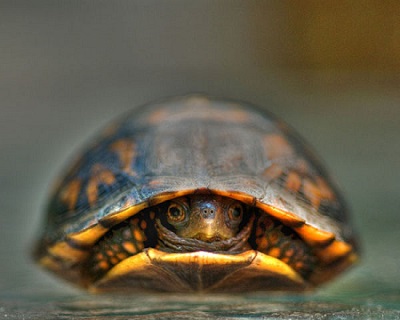It is common knowledge that the modern turtle shell is largely used for protection. No other living vertebrate has so drastically altered its body to form such an impenetrable protective structure as the turtle. However, a new study by an international group of paleontologists suggests that the broad ribbed proto shell on the earliest partially shelled fossil turtles was initially an adaptation, for burrowing underground, not for protection. Paleontologist Tyler Lyson is among the scientists that helped make this discovery.
“Why the turtle shell evolved is a very Dr. Seuss-like question and the answer seems pretty obvious — it was for protection,” said Dr. Lyson, lead author of Fossorial Origin of the Turtle Shell. But just like the bird feather did not initially evolve for flight, the earliest beginning of the turtle shell was not for protection but rather for digging underground to escape the harsh South African environment where these early proto turtles lived.”
The early evolution of the turtle shell had long puzzled scientists. “We knew from both the fossil record and observing how the turtle shell develops in modern turtles that one of the first major changes toward a shell was the broadening of the ribs,” said Dr. Lyson. While distinctly broadened ribs may not seem like a significant modification, it has a serious impact on both breathing and speed in quadrupedal animals. Ribs are used to support the body during locomotion and play a crucial role in ventilating the lungs. Distinctly broadened ribs stiffen the torso, which shortens an animal’s stride length and slows it down, interfering with breathing.
“The integral role of ribs in both locomotion and breathing is likely why we don’t see much variation in the shape of ribs,” said Dr. Lyson. “Ribs are generally pretty boring bones. The ribs of whales, snakes, dinosaurs, humans, and pretty much all other animals look the same. Turtles are the one exception, where they are highly modified to form the majority of the shell.”
A big breakthrough came with the discovery of several specimens of the oldest (260- million-year-old) partially shelled proto turtle, Eunotosaurus africanus. Several of these specimens were discovered by two of the study’s coauthors, Drs. Roger Smith and Bruce Rubidge. But the most important specimen was found by a then 8-year-old South African boy on his father’s farm in the Western Cape of South Africa. This specimen, which is about 15 cm long, comprises a well preserved skeleton together with the fully articulated hands and feet.
Source: Science daily
N.H.Kh

